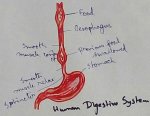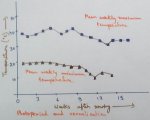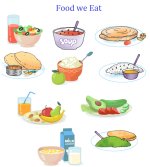Stomata
What are called stomata?
The lowers side of a leaf has many tiny holes. Plants breathe through these tiny holes. These holes are called stomata.
As we know, plants are living things and they need food and water to survive. Leaves prepare food for the whole plant. They use water, air and sunlight in the presence of a green substance called chlorophyll present in them. This chlorophyll catches the sunlight to make food. Leaves get water from the roots through the stem. They take carbon dioxide from air. With the help of the carbon dioxide, water and sunlight, it prepares food for the plant. The process of making food is called photosynthesis. So, leaves are called the kitchen or food factory of the plant.
The food goes to all parts of the plant through the stem. A
part of the food made by the leaves is used by the plant to grow. The remaining
part of the food is stored in its seeds, stems, roots, fruits or leaves. The
lettuce, spinach, cabbage, etc. store food in its leaves.
During photosynthesis, leaves give out a gas called oxygen, which is breathed in by all living things.
Note: The stomata are usually open during the day and close at night.
Recent Articles
-
Eleventh Grade | Eleventh Grade Science | Eleventh Grade Math
Jun 27, 25 12:26 AM
Eleventh grade biology has been designed in accordance with the recommended topics. We will cover all the topics in biology very exciting and interesting way. -
Explain Digestion of Food | Salivary Glands | Oesophagus | Stomach
Jun 27, 25 12:20 AM
Before the digestion is start by the different enzymes secreted from the different digestive glands food must be turned and chut or mixed with saliva inside the mouth. -
Explain Human Digestive System | Mouth | Tongue | Pharynx | Teeth
Jun 21, 25 01:15 PM
Digestive system is a system of alimentary canal and digestive glands. Alimentary canal- alimentary canal is a tube of variable diameter having muscular wall and glandular epithelial tissues which sta… -
Vernalisation in Plants | Definition | Mechanism | Devernalization |
Jun 18, 25 01:34 PM
Definition of vernalisation- The change of flowering habit due to the low temperature treatment is known as vernalisation. This is a physiological process which was denoted by Clipart in 1857 invite b… -
The Food We Eat | Food we Get from Plants and Animals | Carbohydrates
Jun 15, 25 03:20 PM
What are the food that we should eat? Find out the names of ten food items in the word maze. Write the names in the correct column of the table given below. Food we get from plants Food we get from an…




New! Comments
Have your say about what you just read! Leave me a comment in the box below.